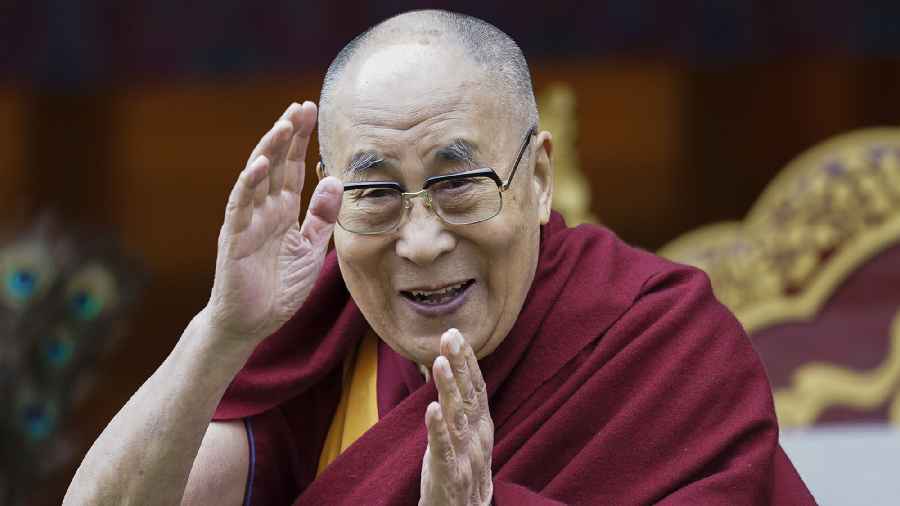The Dalai Lama’s recent sojourn to Bodh Gaya, his first after a gap of three years, brought the holiest of Buddhist sites back in the spotlight. The Tibetan-Buddhist leader used the occasion to launch his strongest-ever attack on China, blaming it for “trying to destroy Buddhism” — something that Beijing may interpret as India playing the Buddhist card.
Of the four places held most sacred by Buddhists, the Mahabodhi temple in Bodh Gaya is the most visited and venerated. After all, it is here that Buddha attained enlightenment. The other three — Lumbini in Nepal, where he was born; Kusinagar, where he attained Mahaparinirvana; and Sarnath, where he gave his first sermon — are important too. The pilgrimage tourism potential of a Buddhist circuit centred around Bodh Gaya is enormous and, so far, grossly underutilised. A 2017 World Bank report said that only 0.005% of the world’s Buddhist population visits these sacred Buddhist sites in South Asia. “Despite the significance of South Asian Buddhist heritage and the fact that around 490 million Buddhists worldwide strive to visit some of these most sacred sites in their lifetime, the Buddhist Circuit as one integrated whole has not been successfully developed,” says the World Bank report.
The Indian government has ambitious plans to develop a Buddhist tourist circuit centred around Bodh Gaya with funding from the World Bank. When new infrastructure projects are completed, the numbers are likely to go up. During a recent visit to Bodh Gaya, this writer saw long queues at the Mahabodhi temple and multiple groups of monks holding prayer sessions and religious discourses in the temple complex. A large group of Burmese monks were even praying for peace in Myanmar. Most pilgrims are from East and Southeast Asian countries where Buddhism is the dominant faith. Municipal authorities estimate that nearly eight to ten thousand pilgrims arrived in the last week of December alone to hear the Dalai Lama.
Of the 52 temples in Bodh Gaya, only two are managed and run by Indian Buddhists. The rest are well-endowed and run by foreign monks. The temples proudly announce their nationality on signboards at the entrance — Nipponji Japanese temple, Wat Thai Temple, Bangladesh Buddhist monastery and so on. Even senior ministers from communist Vietnam regularly visit the Vietnamese temple run by a Sorbonne-educated Buddhist monk. The 289-kilogrammedome inlaid with pure gold atop the Mahabodhi temple was made possible by donations from Thai devotees. Thai and Japanese restaurants and Bhutanese-Tibetan eateries and markets dot the landscape. Bodh Gaya is thus an international town.
Bodh Gaya has huge potential for Bihar’s economy and that of West Bengal because Calcutta is the entry point for most pilgrims from East and Southeast Asia. The travel time to and from Bodh Gaya will be halved when several under-construction flyovers and bridges are completed and Vande Bharat trains are introduced on this route.
Bengal should thus consider donating some land to the Buddhist trust, Bodhichariya, headed by Ven. Bimal Thisya Bhikkhuso that it can go ahead with a stalled project of installing a huge Buddha statue and meditation site in Rajarhat. This will benefit Calcutta as many pilgrims will consider staying a few extra days.
Developing a Buddhist circuit around Bodh Gaya also offers India diplomatic leverage to operationalise its Act East foreign policy. Venerated Buddhist figures must find a place in Bodh Gaya’s governance structure alongside representatives of the Indian and the Bihar governments. India can organise a huge international congregation at Bodh Gaya by turning Buddha Purnima celebrations into a global event.
The Dalai Lama’s annual visit could be the second big event. Perhaps an international authority, under the firm control of the Indian culture ministry, can take the lead in the celebrations.
Turning Bodh Gaya into a Buddhist Vatican will not undermine India’s sovereignty but boost its soft power at a time when the prime minister has pitched peace diplomacy as part of India’s G20 presidency.
Subir Bhaumik is a former BBC correspondent










